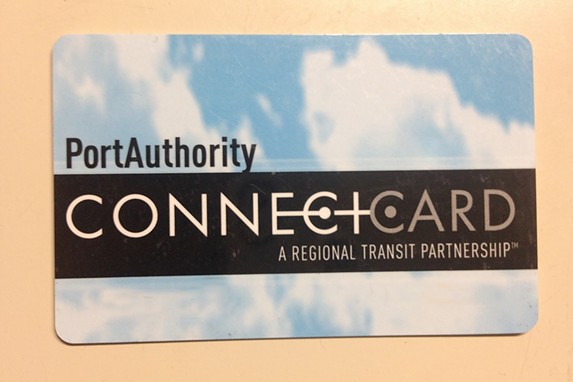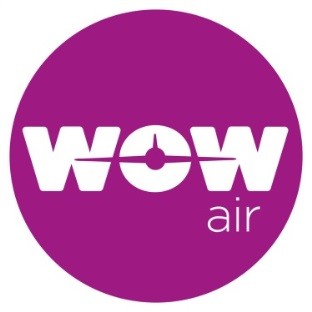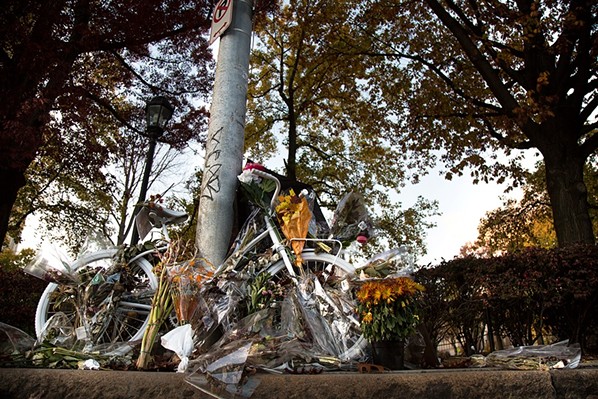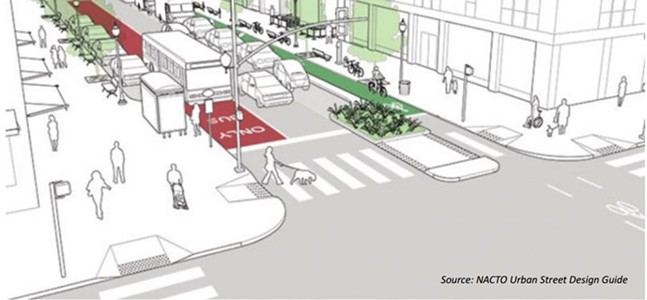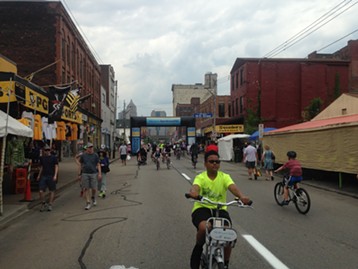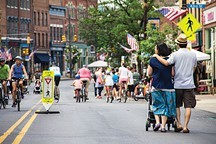Friday, December 30, 2016
Also, Fri., Dec. 30, and Sat., Dec. 31, are the last days to get a free ConnectCard at the Downtown Port Authority Service Center at 534 Smithfield St., participating Giant Eagle grocery stores and a lots of other locations. ConnectCards will cost $1 starting Jan. 1, 2017. And you'll want to have one, because the cash fare is rising from $2.50 to $2.75; ConnectCard users will pay $2.50.
Since the $3.75 Zone 2 fare charge is being scrapped and all fares will be $2.75 or less, the changes should provide a boost to some suburban riders who rely on the bus to get around. And there are also some policy changes that could help riders with disabilities.
All the changes are outlined below:
Fares
- $2.50 fare throughout whole system if using ConnectCard
- $2.75 cash fare
- $1 transfers using ConnectCard only (cash users will have to pay $2.75 again if transferring)
- $1 fee to purchase new ConnectCards
- 7-day pass available for purchase
- Half-fare passes for people with disabilities will be available on ConnectCards, as will reduced-fare child passes eventually.
- Pay-as-you-enter on all routes
- Exit through back door(s) on all routes. (Riders unable to use back door can exit at front.)
- Elimination of the Downtown free zone for bus rides. (Light-rail will still be free Downtown and to the North Shore.)
- Suburban light-rail riders will operate on a honor system and will tap cards either in car or on receptacles on stations, starting July 2017.
Tags: Port Authority of Allegheny County , Connect Card , New Year's Day , Image
Monday, November 7, 2016
But today it was announced PIT airport will finally be seeing year-round flights again across international borders with flights to Iceland. WOW air has announced four flights a week from Pittsburgh to Reykjavik, Iceland's capital, starting in on June 16. From the volcanic nation's capital, WOW also offers connections to 20 European cities, including Paris, Rome, London and Barcelona.
“We are excited to once again have year-round transatlantic service with easy access to Europe,” Allegheny County Airport Authority CEO Christina Cassotis said in a press release.
WOW air is a low-cost carrier that has been rapidly expanding into U.S. markets, with Pittsburgh becoming its first midsize city to receive service. Flights are currently on sale from Pittsburgh to Iceland and beyond, with some one-way flights for as low as $99. (However, rates in the summer months are about triple that.)
Regardless, Allegheny County Executive Rich Fitzgerald is thrilled to see Pittsburgh get more European flights.
“Our recent growth and momentum at Pittsburgh International is matching the momentum and growth of our region," said Fitzgerald in a press release. "WOW recognized Pittsburgh’s pent-up demand for air service to Europe, and the airline will greatly enhance travelers’ options.”
And WOW's CEO Skúli Mogensen feels that the airline's expansion into Pittsburgh will work as a two-way benefit, also attracting Europeans to the Steel City. (Maybe they will want to visit our potential Whiskey Museum.)
“Pittsburgh is certainly a destination on the rise and one that will appeal to a wide range of European travelers looking to discover somewhere different, so we’re thrilled to add the destination to our route list,” said Mogensen in a press release.
But while excitement seems to be in the air at the airport, riders on WOW might want to temper their enthusiasm; the low-cost carrier only allows one carry-on bag per passenger and the fees can reach as high as $100 on a one-way flight.
Tags: Pittsburgh International Airport , WOW Air , Rich Fitzgerald , Iceland , Image
Friday, October 21, 2016
Unfortunately for the University of Pittsburgh educator, and for those who loved her, a car collided into a car behind her and caused a chain reaction that squeezed Hicks in between two vehicles and ultimately resulted in her death. Now, on the near anniversary of that tragic day, advocates and friends are organizing a group ride to honor Hicks and to bring awareness to bike-safety issues.
"Remembering Susan helps us remember her legacy of making the world a better place to live, which include the safety improvements that are so necessary in Oakland," Eric Boerer of Bike Pittsburgh wrote in an email to Pittsburgh City Paper. He is helping organize the event with Hicks' close friends.
Hicks' death, as well as the death of cyclist Dennis Flanagan in the West End, was the last straw for many bike advocates in Pittsburgh. On Aug. 31, hundreds of advocates packed a room at Carnegie Mellon University, demanding that PennDOT start to create more bike-friendly infrastructure, starting with Forbes Avenue in Oakland, were Hicks was killed.
Dawn Seckler, a close friend of Hicks, says that Hicks was a very passionate academic adviser to her students who helped them get grants and scholarships.
"Susan was really that kind of adviser that would get students really excited about getting opportunities," says Seckler. "And she would work hard to make those possibilities become realities."
To celebrate Hicks' life as a cyclist and educator, her close friends started a scholarship fund last year in her honor. Seckler says that Hicks had such a positive effect on people, that the fund raised more than $20,000 in less than a year, and a Pitt student has already received money from the scholarship.
"This was a really tangible way that we could create a legacy to Susan's energy," says Seckler.
Seckler adds that the cycling community has also been instrumental in advocating for Hicks.
"Susan was a multifaceted person," says Seckler. "She had more than one community, and these communities have been engaging with one another. The biking community has been able to mobilize her advocacy and get to know this really unique woman. We all have so many communities, and they don't always come together, and it has been wonderful seeing these communities come together."
For those wishing to participate, a memorial event starts at 4:30 p.m. today (Oct. 21) at the Hicks ghost bike, near the corner of Forbes and South Bellefield avenues, near the Carnegie Music Hall. A memorial group ride then starts at 5:30 p.m. from the ghost bike to Brillobox in Bloomfield, where a fundraiser happy hour will be held from 5 to 8 p.m.
Those interested in donating to The Susan M. Hicks Memorial Fund can do so on Pitt's donating website.
Tags: Bike Pittsburgh , Susan Hicks , Forbes Avenue. The Susan M. Hicks Memorial Fund , Image
Friday, October 14, 2016
On Oct. 11, Pittsburgh government groups and nonprofits released a video aimed at reminding pedestrians in Downtown to stay off their phones when crossing the street. A grim reaper walks up to distracted pedestrians and shouts zingers like, “I love the cell phones, makes my job so much easier.”
The video is an advertisement for the campaign “Look Alive, Pittsburgh,” which will run throughout October with improv actors dressed as grim reapers confronting Downtown pedestrians who are on their phones while crossing the street.
But while the video is humorous, some pedestrian advocates aren’t laughing.
Gabriel McMorland is a member of the Pittsburgh City-Allegheny County Task Force on Disabilities, and he advocates for people with disabilities and pedestrians. He has issues with the video because he says it puts too much of the onus on pedestrians to avoid being hit by cars, when drivers are often distracted at the wheel.
"The Look Alive campaign follows the same victim-blaming logic we see in far too many public discussions about people in vulnerable situations,” wrote McMorland in an email to Pittsburgh City Paper. “I'd much rather see a crew of these grim-reaper puppets pushing cars out of the crosswalks or calling out drivers for texting behind the wheel. We've got a culture that accepts life-threatening behavior from drivers as the norm, and I'd like to see more efforts to change that."
According to a study by Ohio State University, the percentage of pedestrians killed while using cell phones has risen from less than 1 percent in 2004 to more than 3.5 percent in 2010.
Some pedestrians in the video seem unaware of their surroundings, and the grim reaper scares a few who are staring at phones as they cross the street. However, each person that is walking while texting appears to be crossing the street on a walk signal and within the designated crosswalk.
McMorland believes there is a better strategy for pedestrian safety. He references an advocate in Mexico City, who dresses up as a wrestler and blocks cars as pedestrians cross the street, as a superior example of how to avoid pedestrian death by cars.
And it’s not just pedestrian advocates who are upset with the campaign. Adam Shuck, curator of the popular lunchtime newsletter Eat That, Read This, tweeted criticism of the video, saying this “grim reaper pedestrian victim-blaming stunt is some hot garbage.”
The video was produced by the Pittsburgh Downtown Partnership and PDP spokesperson Leigh White says the intent was “to use humor to encourage pedestrians to be more self-aware.” She says PDP acknowledges the criticism, but believes the campaign is and will be successful.
“While we have heard some criticism of the campaign, and suggestions that there is an element of victim-blaming, we feel the campaign only encourages pedestrians to reduce behaviors that place themselves at increased risk and in no way absolves vehicles of their responsibility to make pedestrian safety a paramount concern,” wrote White in an email to CP. “We plan to address driver distraction in the next phase of the campaign, with the same goals of reducing behaviors that increase risk to pedestrians, bikers and other vehicles.”
The initiative plans to address distracted drivers by using Downtown bus shelters. The shelters will have white panel advertisements that read “We’re keeping this space blank. So you can keep your eyes on the road.”
Also, electronic “geo-fencing” perimeters will be placed at high-traffic intersections and will place pop-up advertisements on user’s cell phones reminding both pedestrians and drivers to monitor the intersection.
“We have all been guilty of being a distracted driver or pedestrian. We look forward to using the very technology that is distracting to promote our safety-awareness efforts and encourage people to keep their attention where it is needed” said PDP president Jeremy Waldrup in the campaign’s initial press release.
Tags: Pittsburgh Downtown Partnership , Look Alive Pittsburgh , Eat That Read This , Image , Video
Monday, July 18, 2016
“We want to build a city that accommodates people walking, taking public transit, biking, and people driving,” Saunders said to a crowd of 50 at the South Side Market House on July 7. “Our streets should be great public spaces.”
She presented a draft of the city’s Complete Streets policy during the public meeting, and laid out how the city plans to redesign streets to accommodate all users. She said roadways could receive complete streets designs in three ways: by creating new roadways, during street pavings and utility replacements, and through large-scale capital improvement projects. She says this helps to limit costs, since pavings and replacements were scheduled anyway and grants are a separate source of funding from the city’s capital budget.
Advocates of Complete Streets designs say they can ease congestion, spur economic development, make neighborhoods more appealing to pedestrians and cyclists and improve public safety.
In fact, one Pittsburgh road will be seeing some equitable road design in the near future. Broadway Avenue in Beechview will be redesigned with friendlier sidewalks, improved light-rail stations and, possibly, Pittsburgh’s first bike lanes shielded by parked cars thanks to a $600,000 state grant awarded to the neighborhood.
“This is such fantastic news for Beechview,” said Pittsburgh City Councilor Natalia Rudiak in a statement. “The neighborhood is poised for renewal with young families buying homes and developers taking on major renovations. Now, our public infrastructure can be more accessible and attractive.”
However, there will be some exceptions, and Eric Boerer of bike-advocacy group Bike Pittsburgh asked at the meeting who would decide what streets are excluded from complete streets design. Saunders said an advisory committee will make those choices and decisions on the committee’s size and makeup, which are not final. She did hint that they will involve members of city government and advocacy groups, however.
But for those who wish to ensure their voices are heard, comments can be given here. Respondents can also send letters to the Department of City Planning offices at 200 Ross St., Fourth Floor, Pittsburgh, PA 15222.The public comment period closes on July 25.
A meeting is also being held tonight (July 18) to receive public input for Pittsburgh's new citywide bike plan at the 1319 Allegheny Ave., North Side from 6-8 p.m. Two more bike-plan public meetings will be held in the next two weeks at various locations around Pittsburgh. Check the city planning department’s calendar for details.
Tags: Pittsburgh , Complete Streets , Department of City Planning , bike , pedestrian , road design , Bike Pittsburgh , Beechview , Natalia Rudiak , Image
Friday, June 24, 2016
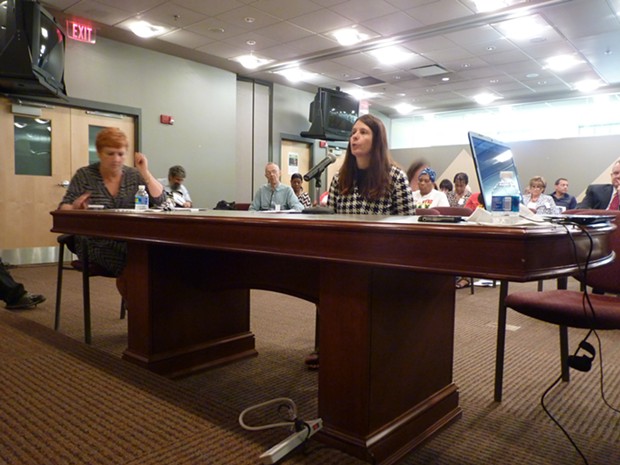
According to a 2016 report from the American Lung Association, the Pittsburgh region failed its criteria for healthy levels of ozone and particle pollution. The region improved on its air quality report from last year, but still has a way to go.
"While air quality in Pittsburgh has improved over the last several decades," says Rachel Filippini, of Group Against Smog and Pollution, or GASP. "We continue to have some of the worst air pollution in the country, especially in terms of fine-particulate matter. One source of these emissions is Port Authority buses."
It is for this reason that a group of environmental and transit advocates spoke at June's Port Authority of Allegheny County board meeting and are calling for the authority to “green their fleet” by 2030, specifically an all-electric fleet.
There are currently 426 diesel vehicles built after 2007, which some would consider “clean diesel,” and 310 diesel vehicles built before 2006, which are not considered clean. PAT board passed a resolution at the meeting that would replace 70 of the older vehicles with newer “clean diesel” options, making the fleet around 70 percent “clean diesel.”
While advocates applaud this effort, they are asking PAT to go even further. Filippini says she would like to see all pre-2006 buses eventually taken out of service and is asking the authority to transition to a fleet of electric buses that are fueled by renewable energy sources. “We must work to green the fleet.”
Kimmy Dihn, of transit-advocate group Pittsburghers for Public Transportation, says moving toward more environmentally friendly vehicles could help address public-health issues, too. “We are voicing the concern of how buses affect the public health of pedestrians, cyclists and public-transportation riders.”
She too is asking PAT to transition to an all-electric fleet. Warwick Powell, of environmental group 350 Pittsburgh, says greening the bus fleet could make Pittsburgh a climate-change leader. He also says this is a great time to do so, given all the local support, including the arrival of solar-energy giant, SolarCity, to the Pittsburgh market.
“Renewable energy has never had stronger support from the government and the public,” says Powell.
PAT spokesperson Jim Ritchie says including electric vehicles is “something we are interested in.” He says the authority is currently working on specifications that will consider including electric buses in the next contract of bus replacements, which could be presented this fall. Ritchie adds that PAT has already tested electric vehicles from companies like California-based Proterra and Canadian-based New Flyer, and plans to test electric buses from one more company. He also notes that the PAT fleet does include 32 hybrid vehicles.
Tags: Port Authority of Allegheny County , climate change , renewable energy , electric bus , air pollution , clean diesel , Pittsburghers for Public Transportation , 350 Pittsburgh , Group Against Smog and Pollution , Image
Thursday, June 9, 2016
Now, the authority has regained financial footing and is looking to implement its new technological muscle in the form of digitally enhanced bus stops, which fits into its plans to modernize and expand Allegheny County’s public-transit system.
“We were behind the times, but now with this new technology, we are leap-frogging most major cities,” says PAT spokesperson Adam Brandolph.
PAT plans to build eight solar-powered bus stops that will provide digital readings of routes’ wait times on iPad-size screens, and two of those digital bus stops will also include maps. (Exclusive of PAT's plans, the super-stop at Smithfield Street and Sixth Avenue Downtown will also soon have a digital screen that shows up-to-the-minute wait times.)
The authority will also install five large touchscreen kiosks that will read out route overviews, provide up-to-the-minute wait times, and offer advice on trip planning (basically utilizing the interface that Google Maps uses). Users will be able to get directions for using public transit, walking, biking or driving, and will be able to email or text those directions.
The kiosks will be located at light-rail stations Downtown and on the North Side, and Brandolph says they should be installed by August. Pole bus stops are also getting revamped.
Many pole bus stops currently only list the route number and name on a small sign. Some of these signs also include routes that no longer exist or routes that have been altered so that bus no longer stops there.
PAT plans to build 85 low-tech pole bus stops Downtown that will include a small map with information on how often buses arrive, as well as routes printed in much larger font. Brandolph says these new pole stops will provide much of the information from the print bus schedules, but condensed into an easy-to-understand format.
“Downtown Pittsburgh has thousands of signs directed at motorists, but it’s equally important for pedestrians to know where they can hop on a bus or grab a light rail vehicle to get them to where they want to go,” said Allegheny County executive Rich Fitzgerald in a press release. “This new wayfinding will enhance visibility of our transit system and make riding on public transportation easier.”
Tags: Pittsburgh , Port Authority of Allegheny County , real time , digital , bus stops , public transportation , Rich Fitzgerald , way finding , Google Maps , Image
Wednesday, June 1, 2016
As part of this year’s first Open Streets festival, Healthy Ride director David White announced plans for Pittsburgh Bike Share to add more stations and reach outlying communities. An interactive map shows around 90 suggested locations, many in neighborhoods that do not currently have a bike-share station, such as Squirrel Hill, Homewood, Beechview and West End Village. The bike-share system is also considering expanding outside of the city limits and has suggestions for stations in Millvale, Wilkinsburg, West Homestead and Bellevue.
“I certainly would not rule out creating connections in Millvale or Wilkinsburg,” says Healthy Ride spokesperson Erin Potts. “These are both areas we'd love to serve.”
Healthy Ride is seeking public input on where the next stations could go. Those interested can visit the map at healthyride.com, “like” spots and provide comments on suggested stations.
“There are, of course, areas where we see great connection potential, but we want to start with hearing from our riders and people who want to ride,” said Potts in an email to City Paper. “We view the interactive map and public-outreach strategy as a means of getting invaluable feedback from the people who live, work and play in Pittsburgh. Their insight will help inform the next 10 stations and beyond.”
Healthy Rides’ first year in operation has netted 80,000 rides, 30,000 registered users, and 2,250 monthly members, according to a press release. On Bike-to-Work Day, when Healthy Ride offered free rides all day, the bike-share system saw 575 rides, including more than 100 during commuting hours.
“We hope that by growing our system we will see even more people biking in Pittsburgh,” said White in a press release.
Tags: Pittsburgh , bike share , Healthy Ride , Open Streets , Millvale , Wilkinsburg , Image
Friday, May 27, 2016
The festival, which closes down a specified route to car traffic, allows people to walk, ride bikes, skateboard, hula-hoop and do whatever their heart desires on asphalt normally choked with automobiles. Six program hubs will be set up along the route where participants can play pick-up basketball, participate in a human stag hunt, workout with friends in free classes, and even take in some yoga. There are many kid-friendly events too.
The route starts in Market Square, Downtown, then goes along Penn Avenue and Butler Street, all the way to Allegheny Cemetery.
The festival is put on to encourage people to think differently about city spaces, maintain a healthy lifestyle, patronize local businesses and consider the benefits that can come to the environment when people walk and bike to get around.
Pittsburgh bike-share system, Healthy Ride, will also be celebrating its one-year anniversary as part of Open Streets and is hosting a program hub outside of its offices on 33rd Street and Penn Avenue. Director David White will announce new Pittsburgh bike share plans at 10:30 a.m.
Also, look forward to a new route for Open Streets come July. Scott Bricker of cycling-advocacy group Bike Pittsburgh tells City Paper that on the festival’s third and final day, July 31, Open Streets will be debuting a new route that starts Downtown, travels through the North Side and finishes in the West End. Details on the exact route are still being finalized.
And if you want to get involved, Bike Pittsburgh has a laundry list of volunteer positions that still need to be filled. Visit bikepgh.org for details.
Tags: Pittsburgh , Open Streets , bike-share , Healthy Ride , Bike Pittsburgh , Image
Wednesday, May 25, 2016
Access to good public transportation seems like an obvious component of affordable-housing planning, but history shows that it hasn’t been so far.
Here in the Pittsburgh area, there are many low-income housing projects that sit in isolated sections of the city, in blighted areas with limited bus access. (For example, Bedford Dwellings, in the Hill District, gets a bus only every 35 to 40 minutes, even during rush hour.)
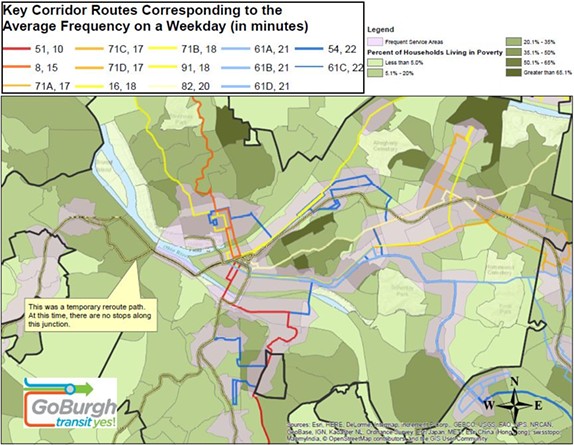
Molly Nichols, of public-transportation advocacy group Pittsburghers for Public Transit, asked, “How can the trust fund insure that affordable housing will be built near good transit?”
Pittsburgh City Councilor and co-chair of the task force Daniel Lavelle said the yet-to-be-chosen affordable-housing advisory boards will be able to prioritize projects near transit. “We don't have this all figured out yet; all the nuances will have to be worked out down the line,” he said.
Lavelle confirmed that the tasks force’s recommendations don’t include specific language that requires new affordable housing to be near frequent public-transportation service. However, he did say that it might be possible to have a transit advocate on one of the city’s advisory boards.
Chris Sandvig, transit expert and policy director of the Pittsburgh Community Reinvestment Group, asked whether other cities similar to Pittsburgh have had success creating affordable housing near current light rail and bus lines. (The new housing development above the East Liberty Busway stop has 360 units, but all are at market rate.) Members of the task force didn’t offer any specific examples to Sandvig, but said that it can be difficult to do because real estate near transit is usually in high demand.
Both Sandvig and Nichols said the exclusion of transit requirements from the task force’s recommendations was an oversight. But Sandvig said the oversight was most likely unintentional. He said that many housing and transit advocates have only recently understood that their issues are closely linked, but that they have started to push those combined agendas.
One member of the Affordable Housing Task Force did offer a possible answer to advocates' transit questions. Nikki Lu, the policy director for SEIU Western Pa., said Wisconsin-based think tank Center on Wisconsin Strategy (COWS) recently published a report on Pittsburgh that lays out policies to help working families in the region. According to the report, “affordable housing should take into account the combined costs of the energy use and transportation needs that come with housing.” It also offers a litany of policy recommendations.
Lu applauded the questions from audience members and said that to translate their concerns into results, advocates must continue “to hold [leaders'] feet to the fire.”
According to Lavelle, the task force’s recommendations should be presented to city council sometime next week.
Tags: Pittsburgh , Affordable Housing Task Force , public transportation , Pittsburghers for Public Transit , Pittsburgh Community Reinvestment Group , Image


